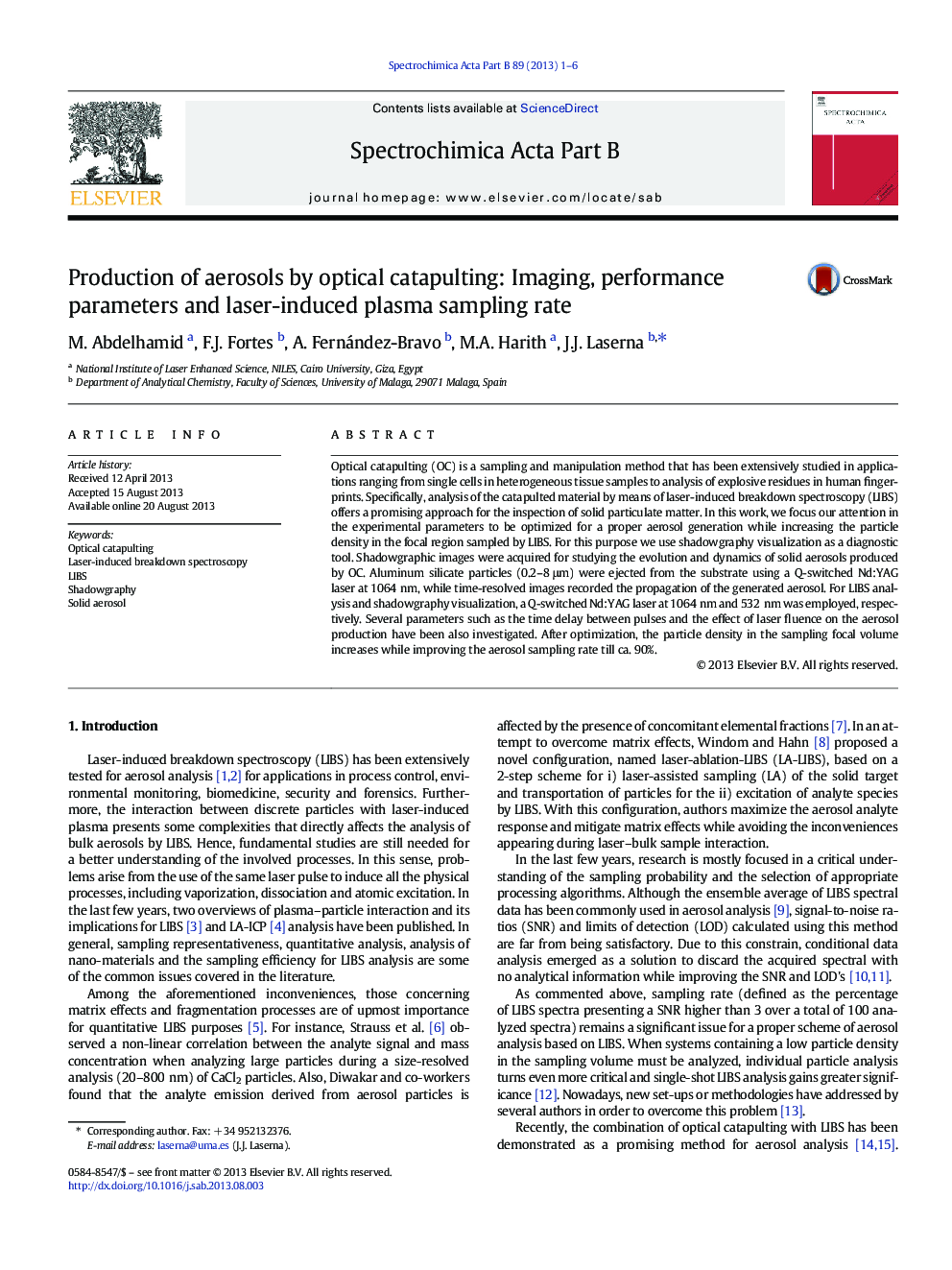| Article ID | Journal | Published Year | Pages | File Type |
|---|---|---|---|---|
| 1239744 | Spectrochimica Acta Part B: Atomic Spectroscopy | 2013 | 6 Pages |
•Aerosol generation by optical catapulting has been successfully optimized.•We study the evolution and dynamics of solid aerosols produced by OC.•We use shadowgraphy visualization as a diagnostic tool.•Effects of temporal conditions and laser fluence on the elevation of the aerosol cloud have been investigated.•The observed LIBS sampling rate increased from 50% reported before to approximately 90%.
Optical catapulting (OC) is a sampling and manipulation method that has been extensively studied in applications ranging from single cells in heterogeneous tissue samples to analysis of explosive residues in human fingerprints. Specifically, analysis of the catapulted material by means of laser-induced breakdown spectroscopy (LIBS) offers a promising approach for the inspection of solid particulate matter. In this work, we focus our attention in the experimental parameters to be optimized for a proper aerosol generation while increasing the particle density in the focal region sampled by LIBS. For this purpose we use shadowgraphy visualization as a diagnostic tool. Shadowgraphic images were acquired for studying the evolution and dynamics of solid aerosols produced by OC. Aluminum silicate particles (0.2–8 μm) were ejected from the substrate using a Q-switched Nd:YAG laser at 1064 nm, while time-resolved images recorded the propagation of the generated aerosol. For LIBS analysis and shadowgraphy visualization, a Q-switched Nd:YAG laser at 1064 nm and 532 nm was employed, respectively. Several parameters such as the time delay between pulses and the effect of laser fluence on the aerosol production have been also investigated. After optimization, the particle density in the sampling focal volume increases while improving the aerosol sampling rate till ca. 90%.
